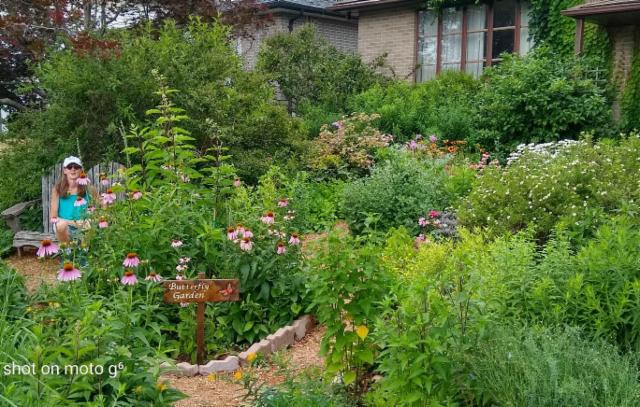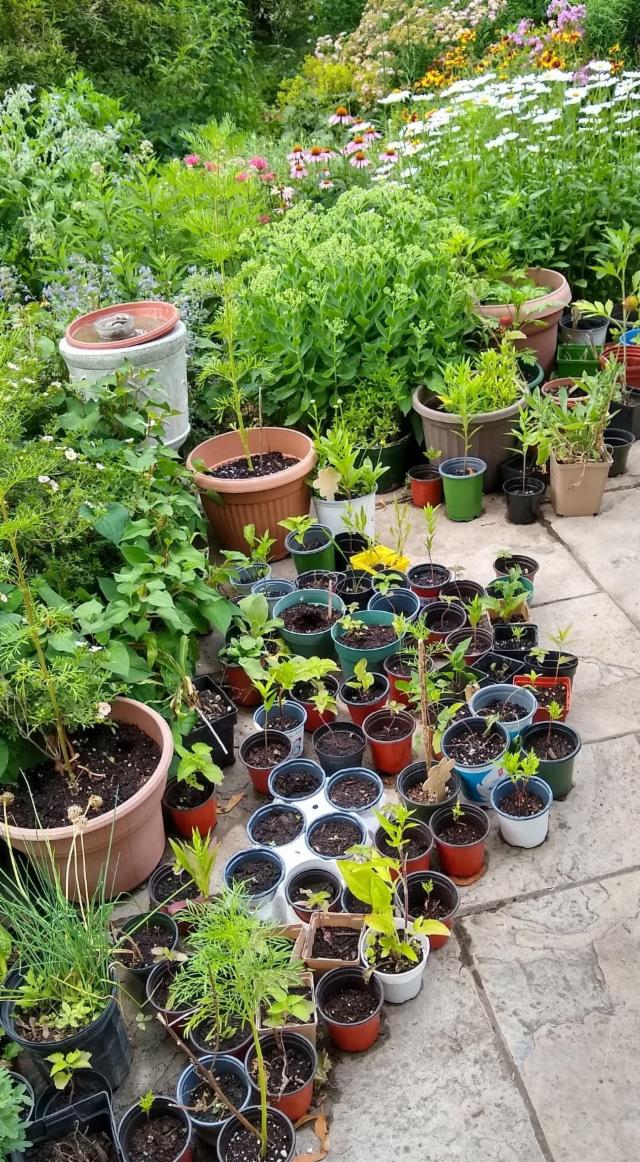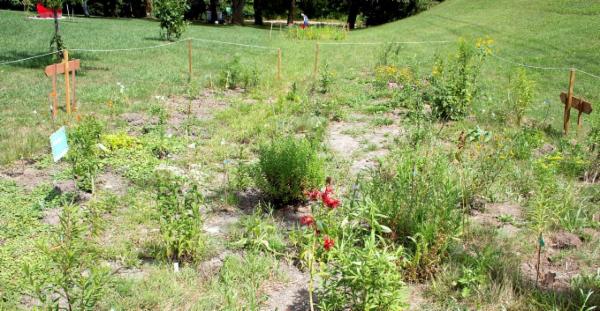McNab Park
Pollinator Gardens & Meadow
Report on McNab Park April 2021
Polly Nation – it takes a village to save a park
Article and photos by Fiona Reid
(courtesy of Halton North Peel Naturalists Club)
Back in May, I was contacted by club member Katherine Shaw to see if I might be interested in helping create pollinator gardens through our region, as part of the David Suzuki Butterflyway Project. This seemed like a worthy initiative, and given that I was gainfully unemployed (thanks Covid), I did have time to help. We decided to look at some options in Norval, under the guidance of Kathy Gastle, long time Norval resident. We soon settled on developing the swale in McNab Park – it wasn’t too big, it was dominated by bullies like thistle and purple loosestrife (we couldn’t really make it worse than it already was), and the Norval Community Association had already agreed it could be developed. We were very short of time, as it was well into May and most plants would have preferred an earlier planting. Added to that, many perennial garden suppliers were sold out or backlogged due to the unusual amount of interest in gardening this past spring. Nonetheless, we forged ahead, purchasing about 80 native perennials, thanks to funding from our HNPN Club. I attacked my own garden, pulling up samples of about 30 species, but we needed more. Julie Power came to the rescue. From her small suburban lot (an oasis for nectar lovers), Julie provides hundreds of plants, all for free, to anyone wishing to grow natives and attract insects. I stopped by and Julie gave me a tour, offering me a huge range of perennials from her collection, most already potted up and ready to go. “Do you have Blanket-flower? Lance-leaved Coreopsis? Oh, you need some Pearly Everlasting for the Painted Lady caterpillars!” My car was filling up, but she had just started.

Julie Power in her garden
Meanwhile, Katherine was rounding up a group of volunteers to get the plants into the ground and keep them alive. With three car loads of plants we descended on McNab one weekend in late May. As the one who knows what all the plants were and roughly what they preferred, I was in charge of where each one went, and soon holes were being dug, dirt was flying, and plants were going in the ground in warp speed. “Where does this one go?” What is this plant?” It was crazy hectic but it was going well! We had a bit of string and a few spindly bamboo poles to mark off the area. Carolyn Martin, a Georgetown resident, appeared carrying much sturdier posts. We marked off one upper plot, but then I noticed that further down the swale there were numerous New England Asters struggling to grow despite being mowed back a few weeks earlier. I grabbed the last of the string and posts and quickly cordoned off a second plot just to stop the onslaught of the volunteer mowing crew. These asters are extremely important nectar sources for Monarchs as they fly south in fall, so I wanted to save them. So there it was, two plots semi-randomly marked off (though remarkably similar to each other in size – almost as if it had been planned that way).

A selection of Julie’s plants ready to donate
Having a second plot established, we took Julie up on her weekly offers of more plants, I brought others from my garden, and Kathy Gastle purchased two Spicebushes. Don Scallen added a couple of butterfly milkweed, which had been sold out. Our team was on hand at least once a week to water all summer, carrying a range of containers up from the river, or loading trash cans with water and dragging those up. We soon found ourselves weeding in earnest, as we discovered that purple loosestrife has enormous, woody roots forming a thick layer under the soil. It was hard work but the results soon began to speak for themselves, as plants came into bloom. And with the plants came the wildlife – grasshoppers, stinkbugs, spiders, soldier beetles, a leopard frog and an American toad, and, finally, a monarch butterfly slowly sailed over and lit to feast on nectar of a swamp milkweed.
Next year the garden will really come into its own as the plants settle in and grow more profusely, and of course we plan to expand in various directions, so the meadow will get bigger and better. To me it has been a wonderfully positive experience, as much for the camaraderie of the watering team as for the appearance of a good range of flowers. Katherine summed it up really well in her article in the Independent below. “I think it has given us something worthwhile to do and something positive to focus on during difficult times. Helping pollinators, while building a more eco-friendly community, has lifted each of us out of our individual lives and helped us come together to be part of something much bigger. In September we will have a small ceremony to officially open the meadow and install signage. Feel free to join us (date will be announced) or just take the time to visit McNab during the fall to see the pollinator meadow and enjoy a stroll along the Credit River. It’s worth the drive to Norval!
 The Swale |